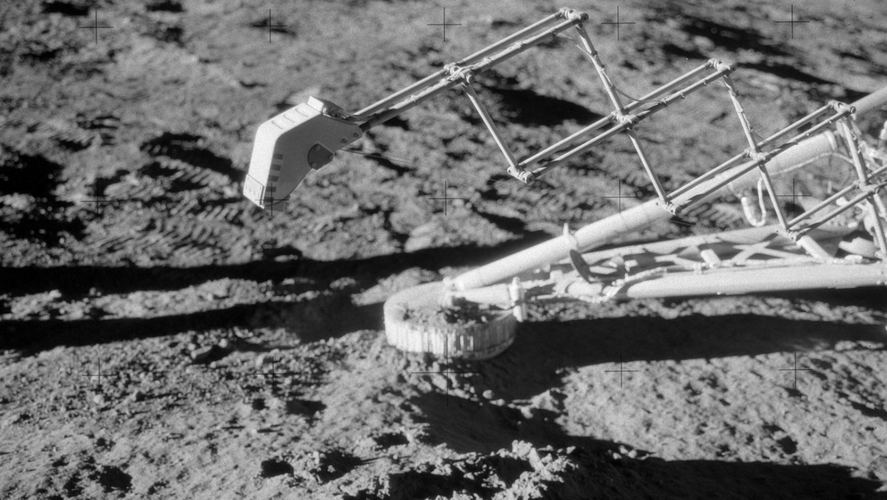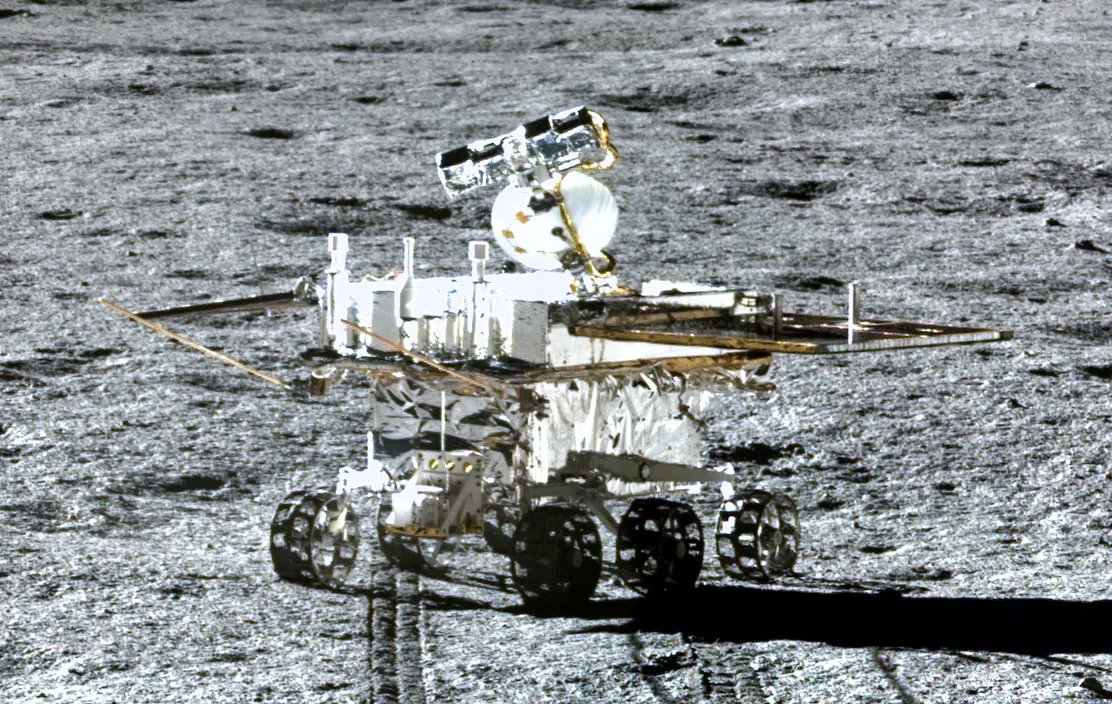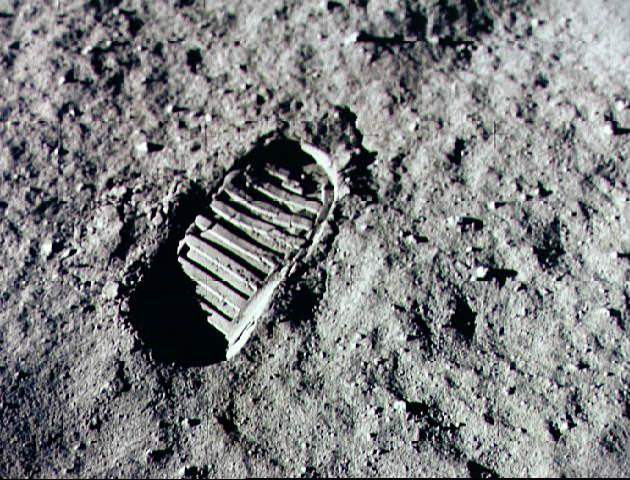Challenges have been a mainstay of space exploration for several years at this point. In the past, they have ranged from making a potential space elevator to designing a solar power system on the Moon. The European Space Agency is continuing that tradition and has recently released a new challenge focusing on lunar resources. Called the Identifying Challenges along the Lunar ISRU Value Chain campaign, this new ESA platform is the next step in the agency’s efforts to develop an entire “value chain” of in-situ resource utilization (ISRU) technologies.
Continue reading “ESA Wants Your Ideas for Living off the Land… on the Moon”Researchers Make Rocket Fuel Using Actual Regolith From the Moon
In-situ resource utilization is a hot topic these days in space exploration circles, and scientists and engineers have had a great advantage of getting access to new materials from bodies on the solar system that either have never been seen before, such as asteroids or haven’t been visited in decades, such as the moon. Recently, China’s Chang’e 5 brought back the first sample of lunar regolith to Earth in almost 50 years. Using part of that sample, researchers from several Chinese universities have developed an automated system to create rocket fuel and oxygen out of CO2, using the lunar regolith as a catalyst.
Continue reading “Researchers Make Rocket Fuel Using Actual Regolith From the Moon”The First Crops on Mars Should be Alfalfa and Cyanobacteria. Then Comes Tastier Plants
Mark Watney can keep his potatoes. Real astronauts should grow alfalfa.
Continue reading “The First Crops on Mars Should be Alfalfa and Cyanobacteria. Then Comes Tastier Plants”China’s Rover Finds That Regolith on the Moon’s far-Side is Stickier Than the Near-Side
We’re never able to see the far side of the moon from the Earth, but that doesn’t mean it’s that different. Recently rovers and satellites have started exploring the lesser-known side of the moon. They found a slightly different geology than that discovered on the near side, which might have implications for navigating the far side in the future.
Continue reading “China’s Rover Finds That Regolith on the Moon’s far-Side is Stickier Than the Near-Side”Chefs on the Moon Will be Cooking up Rocks to Make air and Water
NASA has delayed their Artemis mission to the Moon, but that doesn’t mean a return to the Moon isn’t imminent. Space agencies around the world have their sights set on our rocky satellite. No matter who gets there, if they’re planning for a sustained presence on the Moon, they’ll require in-situ resources.
Oxygen and water are at the top of a list of resources that astronauts will need on the Moon. A team of engineers and scientists are figuring out how to cook Moon rocks and get vital oxygen and water from them. They presented their results at the Europlanet Science Congress 2021.
Continue reading “Chefs on the Moon Will be Cooking up Rocks to Make air and Water”Colonizing the Inner Solar System
Science fiction has told us again and again, we belong out there, among the stars. But before we can build that vast galactic empire, we’ve got to learn how to just survive in space. Fortunately, we happen to live in a Solar System with many worlds, large and small that we can use to become a spacefaring civilization.
This is half of an epic two-part article that I’m doing with Isaac Arthur, who runs an amazing YouTube channel all about futurism, often about the exploration and colonization of space. Make sure you subscribe to his channel.
This article is about colonizing the inner Solar System, from tiny Mercury, the smallest planet, out to Mars, the focus of so much attention by Elon Musk and SpaceX. In the other article, Isaac will talk about what it’ll take to colonize the outer Solar System, and harness its icy riches. You can read these articles in either order, just read them both.
At the time I’m writing this, humanity’s colonization efforts of the Solar System are purely on Earth. We’ve exploited every part of the planet, from the South Pole to the North, from huge continents to the smallest islands. There are few places we haven’t fully colonized yet, and we’ll get to that.
But when it comes to space, we’ve only taken the shortest, most tentative steps. There have been a few temporarily inhabited space stations, like Mir, Skylab and the Chinese Tiangong Stations.
Our first and only true colonization of space is the International Space Station, built in collaboration with NASA, ESA, the Russian Space Agency and other countries. It has been permanently inhabited since November 2nd, 2000. Needless to say, we’ve got our work cut out for us.
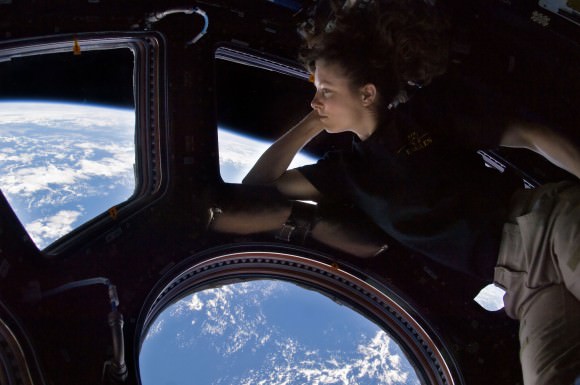
Before we talk about the places and ways humans could colonize the rest of the Solar System, it’s important to talk about what it takes to get from place to place.
Just to get from the surface of Earth into orbit around our planet, you need to be going about 10 km/s sideways. This is orbit, and the only way we can do it today is with rockets. Once you’ve gotten into Low Earth Orbit, or LEO, you can use more propellant to get to other worlds.
If you want to travel to Mars, you’ll need an additional 3.6 km/s in velocity to escape Earth gravity and travel to the Red Planet. If you want to go to Mercury, you’ll need another 5.5 km/s.
And if you wanted to escape the Solar System entirely, you’d need another 8.8 km/s. We’re always going to want a bigger rocket.
The most efficient way to transfer from world to world is via the Hohmann Transfer. This is where you raise your orbit and drift out until you cross paths with your destination. Then you need to slow down, somehow, to go into orbit.
One of our primary goals of exploring and colonizing the Solar System will be to gather together the resources that will make future colonization and travel easier. We need water for drinking, and to split it apart for oxygen to breathe. We can also turn this water into rocket fuel. Unfortunately, in the inner Solar System, water is a tough resource to get and will be highly valued.
We need solid ground. To build our bases, to mine our resources, to grow our food, and to protect us from the dangers of space radiation. The more gravity we can get the better, since low gravity softens our bones, weakens our muscles, and harms us in ways we don’t fully understand.
Each world and place we colonize will have advantages and disadvantages. Let’s be honest, Earth is the best place in the Solar System, it’s got everything we could ever want and need. Everywhere else is going to be brutally difficult to colonize and make self-sustaining.
We do have one huge advantage, though. Earth is still here, we can return whenever we like. The discoveries made on our home planet will continue to be useful to humanity in space through communications, and even 3D printing. Once manufacturing is sophisticated enough, a discovery made on one world could be mass produced half a solar system away with the right raw ingredients.
We will learn how to make what we need, wherever we are, and how to transport it from place to place, just like we’ve always done.

Mercury is the closest planet from the Sun, and one of the most difficult places that we might attempt the colonize. Because it’s so close to the Sun, it receives an enormous amount of energy. During the day, temperatures can reach 427 C, but without an atmosphere to trap the heat, night time temperatures dip down to -173 C. There’s essentially no atmosphere, 38% the gravity of Earth, and a single solar day on Mercury lasts 176 Earth days.
Mercury does have some advantages, though. It has an average density almost as high as Earth, but because of its smaller size, it actually means it has a higher percentage of metal than Earth. Mercury will be incredibly rich in metals and minerals that future colonists will need across the Solar System.
With the lower gravity and no atmosphere, it’ll be far easier to get that material up into orbit and into transfer trajectories to other worlds.
But with the punishing conditions on the planet, how can we live there? Although the surface of Mercury is either scorching or freezing, NASA’s MESSENGER spacecraft turned up regions of the planet which are in eternal shadow near the poles. In fact, these areas seem to have water ice, which is amazing for anywhere this close to the Sun.
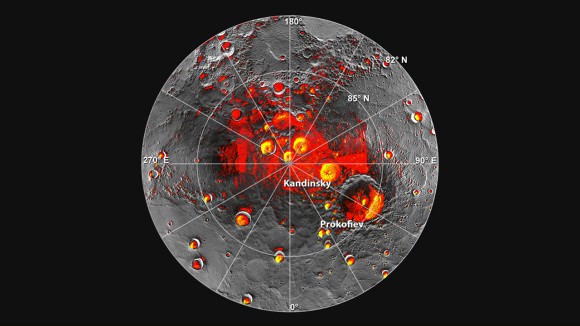
You could imagine future habitats huddled into those craters, pulling in solar power from just over the crater rim, using the reservoirs of water ice for air, fuel and water.
High powered solar robots could scour the surface of Mercury, gathering rare metals and other minerals to be sent off world. Because it’s bathed in the solar winds, Mercury will have large deposits of Helium-3, useful for future fusion reactors.
Over time, more and more of the raw materials of Mercury will find their way to the resource hungry colonies spread across the Solar System.
It also appears there are lava tubes scattered across Mercury, hollows carved out by lava flows millions of years ago. With work, these could be turned into safe, underground habitats, protected from the radiation, high temperatures and hard vacuum on the surface.
With enough engineering ability, future colonists will be able to create habitats on the surface, wherever they like, using a mushroom-shaped heat shield to protect a colony built on stilts to keep it off the sun-baked surface.
Mercury is smaller than Mars, but is a good deal denser, so it has about the same gravity, 38% of Earth’s. Now that might turn out to be just fine, but if we need more, we have the option of using centrifugal force to increase it. Space Stations can generate artificial gravity by spinning, but you can combine normal gravity with spin-gravity to create a stronger field than either would have.
So our mushroom habitat’s stalk could have an interior spinning section with higher gravity for those living inside it. You get a big mirror over it, shielding you from solar radiation and heat, you have stilts holding it off the ground, like roots, that minimize heat transfer from the warmer areas of ground outside the shield, and if you need it you have got a spinning section inside the stalk. A mushroom habitat.

Venus is the second planet in the Solar System, and it’s the evil twin of Earth. Even though it has roughly the same size, mass and surface gravity of our planet, it’s way too close to the Sun. The thick atmosphere acts like a blanket, trapping the intense heat, pushing temperatures at the surface to 462 C.
Everywhere on the planet is 462 C, so there’s no place to go that’s cooler. The pure carbon dioxide atmosphere is 90 times thicker than Earth, which is equivalent to being a kilometer beneath the ocean on Earth.
In the beginning, colonizing the surface of Venus defies our ability. How do you survive and stay cool in a thick poisonous atmosphere, hot enough to melt lead? You get above it.
One of the most amazing qualities of Venus is that if you get into the high atmosphere, about 52.5 kilometers up, the air pressure and temperature are similar to Earth. Assuming you can get above the poisonous clouds of sulphuric acid, you could walk outside a floating colony in regular clothes, without a pressure suit. You’d need a source of breathable air, though.
Even better, breathable air is a lifting gas in the cloud tops of Venus. You could imagine a future colony, filled with breathable air, floating around Venus. Because the gravity on Venus is roughly the same as Earth, humans wouldn’t suffer any of the side effects of microgravity. In fact, it might be the only place in the entire Solar System other than Earth where we don’t need to account for low gravity.
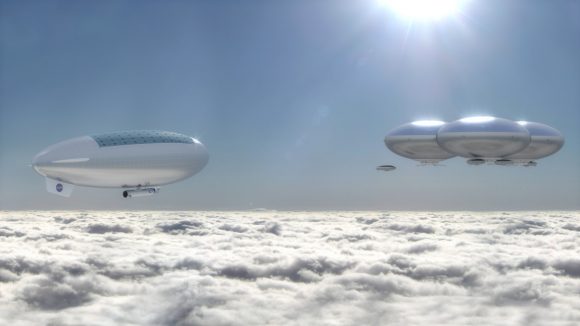
Now the day on Venus is incredibly long, 243 earth days, so if you stay over the same place the whole time it would be light for four months then dark for four months. Not ideal for solar power on a first glance, but Venus turns so slowly that even at the equator you could stay ahead of the sunset at a fast walk.
So if you have floating colonies it would take very little effort to stay constantly on the light side or dark side or near the twilight zone of the terminator. You are essentially living inside a blimp, so it may as well be mobile. And on the day side it would only take a few solar panels and some propellers to stay ahead. And since it is so close to the Sun, there’s plenty of solar power. What could you do with it?
The atmosphere itself would probably serve as a source of raw materials. Carbon is the basis for all life on Earth. We’ll need it for food and building materials in space. Floating factories could process the thick atmosphere of Venus, to extract carbon, oxygen, and other elements.
Heat resistant robots could be lowered down to the surface to gather minerals and then retrieved before they’re cooked to death.
Venus does have a high gravity, so launching rockets up into space back out of Venus’ gravity well will be expensive.
Over longer periods of time, future colonists might construct large solar shades to shield themselves from the scorching heat, and eventually, even start cooling the planet itself.

The next planet from the Sun is Earth, the best planet in the Solar System. One of the biggest advantages of our colonization efforts will be to get heavy industry off our planet and into space. Why pollute our atmosphere and rivers when there’s so much more space… in space.
Over time, more and more of the resource gathering will happen off world, with orbital power generation, asteroid mining, and zero gravity manufacturing. Earth’s huge gravity well means that it’s best to bring materials down to Earth, not carry them up to space.
However, the normal gravity, atmosphere and established industry of Earth will allow us to manufacture the lighter high tech goods that the rest of the Solar System will need for their own colonization efforts.
But we haven’t completely colonized Earth itself. Although we’ve spread across the land, we know very little about the deep ocean. Future colonies under the oceans will help us learn more about self-sufficient colonies, in extreme environments. The oceans on Earth will be similar to the oceans on Europa or Enceladus, and the lessons we learn here will teach us to live out there.
As we return to space, we’ll colonize the region around our planet. We’ll construct bigger orbital colonies in Low Earth Orbit, building on our lessons from the International Space Station.
One of the biggest steps we need to take, is understanding how to overcome the debilitating effects of microgravity: the softened bones, weakened muscles and more. We need to perfect techniques for generating artificial gravity where there is none.
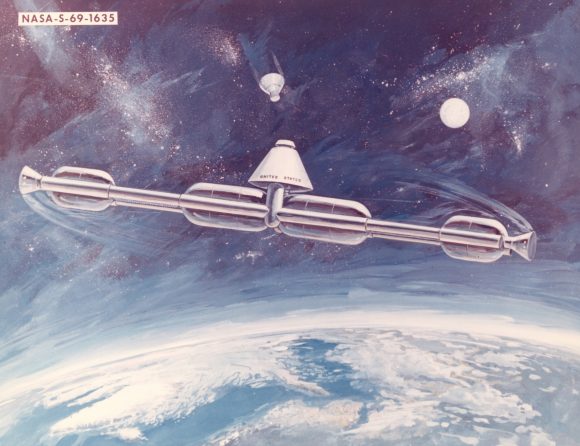
The best technique we have is rotating spacecraft to generate artificial gravity. Just like we saw in 2001, and The Martian, by rotating all or a portion of a spacecraft, you can generated an outward centrifugal force that mimics the acceleration of gravity. The larger the radius of the space station, the more comfortable and natural the rotation feels.
Low Earth Orbit also keeps a space station within the Earth’s protective magnetosphere, limiting the amount of harmful radiation that future space colonists will experience.
Other orbits are useful too, including geostationary orbit, which is about 36,000 kilometers above the surface of the Earth. Here spacecraft orbit the Earth at exactly the same rate as the rotation of Earth, which means that stations appear in fixed positions above our planet, useful for communication.
Geostationary orbit is higher up in Earth’s gravity well, which means these stations will serve a low-velocity jumping off points to reach other places in the Solar System. They’re also outside the Earth’s atmospheric drag, and don’t require any orbital boosting to keep them in place.
By perfecting orbital colonies around Earth, we’ll develop technologies for surviving in deep space, anywhere in the Solar System. The same general technology will work anywhere, whether we’re in orbit around the Moon, or out past Pluto.
When the technology is advanced enough, we might learn to build space elevators to carry material and up down from Earth’s gravity well. We could also build launch loops, electromagnetic railguns that launch material into space. These launch systems would also be able to loft supplies into transfer trajectories from world to world throughout the Solar System.
Earth orbit, close to the homeworld gives us the perfect place to develop and perfect the technologies we need to become a true spacefaring civilization. Not only that, but we’ve got the Moon.
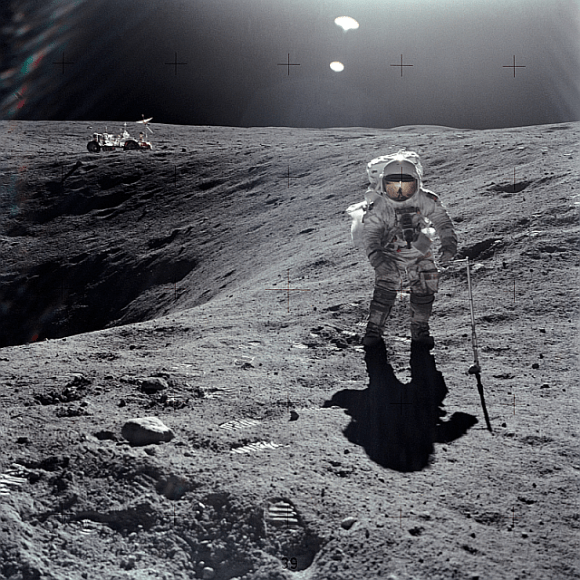
The Moon, of course, is the Earth’s only natural satellite, which orbits us at an average distance of about 400,000 kilometers. Almost ten times further than geostationary orbit.
The Moon takes a surprising amount of velocity to reach from Low Earth Orbit. It’s close, but expensive to reach, thrust speaking.
But that fact that it’s close makes the Moon an ideal place to colonize. It’s close to Earth, but it’s not Earth. It’s airless, bathed in harmful radiation and has very low gravity. It’s the place that humanity will learn to survive in the harsh environment of space.
But it still does have some resources we can exploit. The lunar regolith, the pulverized rocky surface of the Moon, can be used as concrete to make structures. Spacecraft have identified large deposits of water at the Moon’s poles, in its permanently shadowed craters. As with Mercury, these would make ideal locations for colonies.
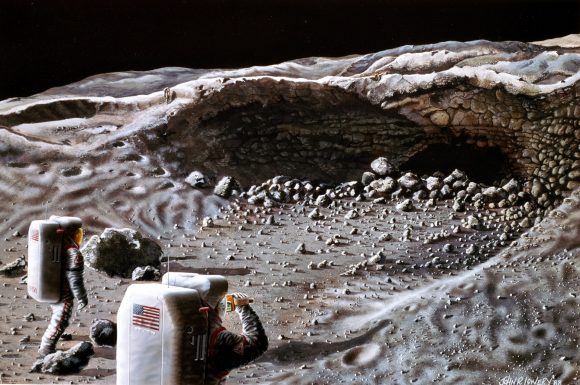
Our spacecraft have also captured images of openings to underground lava tubes on the surface of the Moon. Some of these could be gigantic, even kilometers high. You could fit massive cities inside some of these lava tubes, with room to spare.
Helium-3 from the Sun rains down on the surface of the Moon, deposited by the Sun’s solar wind, which could be mined from the surface and provide a source of fuel for lunar fusion reactors. This abundance of helium could be exported to other places in the Solar System.
The far side of the Moon is permanently shadowed from Earth-based radio signals, and would make an ideal location for a giant radio observatory. Telescopes of massive size could be built in the much lower lunar gravity.
We talked briefly about an Earth-based space elevator, but an elevator on the Moon makes even more sense. With the lower gravity, you can lift material off the surface and into lunar orbit using cables made of materials we can manufacture today, such as Zylon or Kevlar.
One of the greatest threats on the Moon is the dusty regolith itself. Without any kind of weathering on the surface, these dust particles are razor sharp, and they get into everything. Lunar colonists will need very strict protocols to keep the lunar dust out of their machinery, and especially out of their lungs and eyes, otherwise it could cause permanent damage.

Although the vast majority of asteroids in the Solar System are located in the main asteroid belt, there are still many asteroids orbiting closer to Earth. These are known as the Near Earth Asteroids, and they’ve been the cause of many of Earth’s great extinction events.
These asteroids are dangerous to our planet, but they’re also an incredible resource, located close to our homeworld.
The amount of velocity it takes to get to some of these asteroids is very low, which means travel to and from these asteroids takes little energy. Their low gravity means that extracting resources from their surface won’t take a tremendous amount of energy.
And once the orbits of these asteroids are fully understood, future colonists will be able to change the orbits using thrusters. In fact, the same system they use to launch minerals off the surface would also push the asteroids into safer orbits.
These asteroids could be hollowed out, and set rotating to provide artificial gravity. Then they could be slowly moved into safe, useful orbits, to act as space stations, resupply points, and permanent colonies.
There are also gravitationally stable points at the Sun-Earth L4 and L5 Lagrange Points. These asteroid colonies could be parked there, giving us more locations to live in the Solar System.
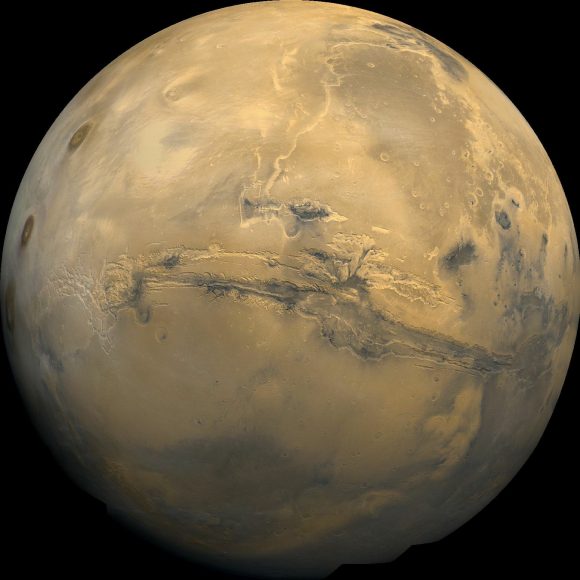
The future of humanity will include the colonization of Mars, the fourth planet from the Sun. On the surface, Mars has a lot going for it. A day on Mars is only a little longer than a day on Earth. It receives sunlight, unfiltered through the thin Martian atmosphere. There are deposits of water ice at the poles, and under the surface across the planet.
Martian ice will be precious, harvested from the planet and used for breathable air, rocket fuel and water for the colonists to drink and grow their food. The Martian regolith can be used to grow food. It does have have toxic perchlorates in it, but that can just be washed out.
The lower gravity on Mars makes it another ideal place for a space elevator, ferrying goods up and down from the surface of the planet.
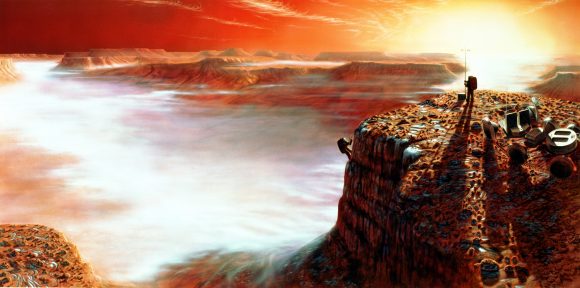
Unlike the Moon, Mars has a weathered surface. Although the planet’s red dust will get everywhere, it won’t be toxic and dangerous as it is on the Moon.
Like the Moon, Mars has lava tubes, and these could be used as pre-dug colony sites, where human Martians can live underground, protected from the hostile environment.
Mars has two big problems that must be overcome. First, the gravity on Mars is only a third that of Earth’s, and we don’t know the long term impact of this on the human body. It might be that humans just can’t mature properly in the womb in low gravity.
Researchers have proposed that Mars colonists might need to spend large parts of their day on rotating centrifuges, to simulate Earth gravity. Or maybe humans will only be allowed to spend a few years on the surface of Mars before they have to return to a high gravity environment.
The second big challenge is the radiation from the Sun and interstellar cosmic rays. Without a protective magnetosphere, Martian colonists will be vulnerable to a much higher dose of radiation. But then, this is the same challenge that colonists will face anywhere in the entire Solar System.
That radiation will cause an increased risk of cancer, and could cause mental health issues, with dementia-like symptoms. The best solution for dealing with radiation is to block it with rock, soil or water. And Martian colonists, like all Solar System colonists will need to spend much of their lives underground or in tunnels carved out of rock.
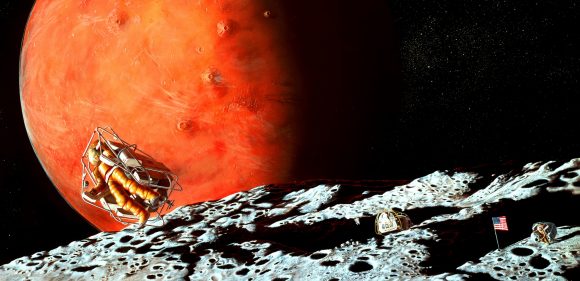
In addition to Mars itself, the Red Planet has two small moons, Phobos and Deimos. These will serve as ideal places for small colonies. They’ll have the same low gravity as asteroid colonies, but they’ll be just above the gravity well of Mars. Ferries will travel to and from the Martian moons, delivering fresh supplies and sending Martian goods out to the rest of the Solar System.
We’re not certain yet, but there are good indicators these moons might have ice inside them, if so that is an excellent source of fuel and could make initial trips to Mars much easier by allowing us to send a first expedition to those moons, who then begin producing fuel to be used to land on Mars and to leave Mars and return home.
According to Elon Musk, if a Martian colony can reach a million inhabitants, it’ll be self-sufficient from Earth or any other world. At that point, we would have a true, Solar System civilization.
Now, continue on to the other half of this article, written by Isaac Arthur, where he talks about what it will take to colonize the outer Solar System. Where water ice is plentiful but solar power is feeble. Where travel times and energy require new technologies and techniques to survive and thrive.
What Are Asteroids Made Of?

What are asteroids made of? Asteroids are made mostly of rock — with some composed of clay and silicate — and different metals, mostly nickel and iron. But other materials have been found in asteroids, as well.
Overview
Asteroids are solid, rocky and irregular bodies that are the rocky remnants of the protoplanetary disk of dust and gas that formed around our young Sun over 4.5 billion years ago. Much of the disk coalesced to form the planets, but some of the debris remained. During the chaotic, fiery days of the early Solar System, debris was constantly crashing together and so small grains became small rocks, which crashed into other rocks to form bigger ones.
Some of debris was shattered remnants of planetesimals – bodies within the young Sun’s solar nebula that never grew large enough to become planets — and large collisions pulverized these planetesimals while other debris never came together due to the massive gravitational pull from Jupiter. This is the how the asteroids originated.
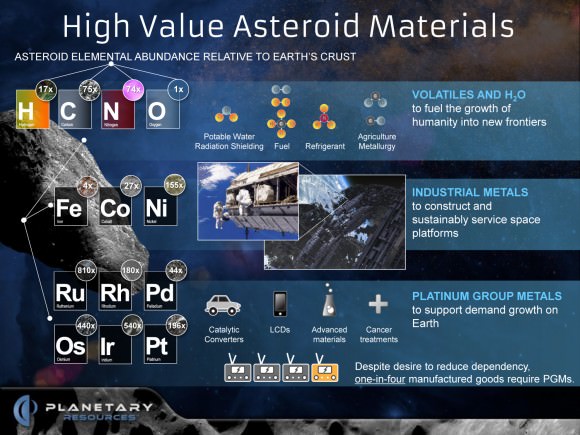
Composition
An asteroid’s composition is mainly determined by how close it is to the Sun. The asteroids that are nearest the Sun are mostly made of carbon, with smaller amounts of nitrogen, hydrogen and oxygen, while the ones further away are made up of silicate rock. Silicates are very common on Earth and in the Solar System. They are made up of oxygen and silicon, the number one and number two most abundant elements in the Earth’s crust. The metallic asteroids are composed of up to 80% iron and 20% a mixture of nickel, iridium, palladium, platinum, gold, magnesium and other precious metals such as osmium, ruthenium and rhodium. There are a few that are made up of half silicate and half metallic.
The platinum group metals are some of the most rare and useful elements on Earth. According to Planetary Resources, a company that hopes to mine asteroids in space, those metals exist in such high concentrations on asteroids that a single 500-meter platinum-rich asteroid can contain more platinum group metals than have ever been mined on Earth throughout human history.
Other minerals have been found on asteroids that have been visited by our spacecraft. For example, the Hayabusa spacecraft landed on Itokawa, a spud-shaped, near-Earth asteroid, and found it consists mainly of the minerals olivine and pyroxene, a mineral composition similar to a class of stony meteorites that have pelted Earth in the past.
In addition to the metals, the elements to create water are present in asteroids and there are indications that asteroids contain water or ice in their interiors, and there’s even evidence that water may have flowed on the surface of at least one asteroid. Observations of Vesta from the Dawn mission show gullies that may have been carved by water. The theory is that when a smaller asteroid or comet slams into a bigger asteroid, the small asteroid or comet could release a layer of ice in the bigger asteroid. The force of the impact briefly turned the ice into water, which flowed across the surface, creating the gullies.
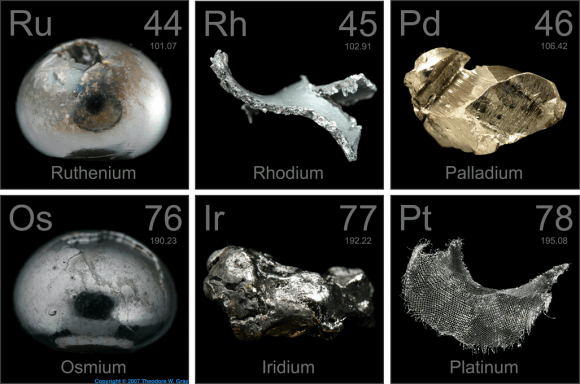
But asteroids may have changed over time. It is also thought that chemical reactions over the millennia or more recent impacts they may have endured also effects the composition of asteroids. Some experienced high temperatures after they formed and partly melted, with iron sinking to the center and forcing basaltic (volcanic) lava to the surface. Only one such asteroid, Vesta, is known to have this type of surface.
Types of Asteroids
Generally, there are three main types of asteroids:
- Dark C (carbonaceous) asteroids, which make up most asteroids and are in the outer belt. They’re believed to be close to the Sun’s composition, with little hydrogen or helium or other “volatile” elements.
- Bright S (silicaceous) asteroids and are in the inner belt, closer to Mars. They tend to be metallic iron with some silicates of iron and magnesium.
- Bright M (metallic) asteroids. They sit in the middle of the asteroid belt and are mostly made up of metallic iron.
There are also D type, known as the Trojan asteroids of Jupiter and are dark and carbonaceous in nature, and V type that are distant asteroids between the orbits of Jupiter and Uranus, and they may have originated in the Kuiper Belt. While these have not been studied extensively, it has been suggested that they have a composition of organic-rich silicates, carbon and anhydrous silicates, possibly with water ice in their interiors.
Comparisons
Asteroids are different from comets, which are mostly rock and ice. Comets usually have tails, which are made from ice and debris sublimating as the comet gets close to the Sun. Asteroids typically don’t have tails, even those near the Sun. But recently, astronomers have seen some asteroids that have sprouted tails, such as asteroid P/2010 A2. Scientists have theorized this can happen when the asteroid has been hit or pummeled by other asteroids and dust or gas is ejected from their surfaces, creating a sporadic tail effect. These so-called “active asteroids” are a newly recognized phenomenon, and as of this writing, only 13 known active asteroids have been found in the main asteroid belt, and so they are very rare.
How Many Asteroids?
There are millions of asteroids in our Solar System. Scientists estimate the asteroid belt has between 1.1 and 1.9 million asteroids larger than 1 kilometer (0.6 mile) in diameter, and millions of smaller ones. Most of the undiscovered asteroids are likely the smaller ones (less than 100 km across) which are more difficult to detect. Some astronomers estimate there could be 150 million asteroids in the entire Solar System.
As of September 06, 2015, 13,024 Near-Earth objects have been discovered. About 875 of these NEOs are asteroids with a diameter of approximately 1 kilometer or larger. Also, 1,609 of these NEOs have been classified as Potentially Hazardous Asteroids (PHAs), but none at this time are expected to impact Earth. Check the NASA NEO website for updates.
All asteroids are covered in space dust called regolith. This dust is usually a rocky rubble more than dust. It is the result of the constant collisions the asteroids undergo in space.
Some additional information about asteroids:
Interesting Facts about Asteroids and what the difference is between and asteroids and comets. Astronomy Cast has a great episode on sky surveys.
References:
NASA Solar System Exploration
NASA, Planetary Resources.
What is Lunar Regolith?
When you’re walking around on soft ground, do you notice how your feet leave impressions? Perhaps you’ve tracked some of the looser earth in your yard into the house on occasion? If you were to pick up some of these traces – what we refer to as dirt or soil – and examine them beneath a microscope, what would you see?
Essentially, you would be seeing the components of what is known as regolith, which is a collection of particles of dust, soil, broken rock, and other materials found here on Earth. But interestingly enough, this same basic material can be found in other terrestrial environments as well – including the Moon, Mars, other planets, and even asteroids.
Definition:
The term regolith refers to any layer of material covering solid rock, which can come in the form of dust, soil or broken rock. The word is derived from the combination of two Greek words – rhegos (which means “blanket”) and lithos (which means “rock).
Earth:
On Earth, regolith takes the form of dirt, soil, sand, and other components that are formed as a result of natural weathering and biological processes. Due to a combination of erosion, alluvial deposits (i.e. moving water deposing sand), volcanic eruptions, or tectonic activity, the material is slowly ground down and laid out over solid bedrock.
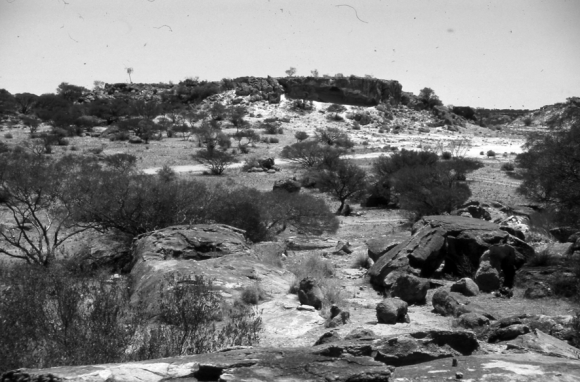
It can be made up of clays, silicates, various minerals, groundwater, and organic molecules. Regolith on Earth can vary from being essentially absent to being hundreds of meters thick. Its can also be very young (in the form of ash, alluvium, or lava rock that was just deposited) to hundreds of millions of years old (regolith dating to the Precambrian age occurs in parts of Australia).
On Earth, the presence of regolith is one of the important factors for most life, since few plants can grow on or within solid rock and animals would be unable to burrow or build shelter without loose material. Regolith is also important for human beings since it has been used since the dawn of civilization (in the form of mud bricks, concrete and ceramics) to build houses, roads, and other civil works.
The difference in terminology between “soil” (aka. dirt, mud, etc.) and “sand” is the presence of organic materials. In the former, it exists in abundance, and is what separates regolith on Earth from most other terrestrial environments in our Solar System.
The Moon:
The surface of the Moon is covered with a fine powdery material that scientists refer to it as “lunar regolith”. Nearly the entire lunar surface is covered with regolith, and bedrock is only visible on the walls of very steep craters.

The Moon regolith was formed over billions of years by constant meteorite impacts on the surface of the Moon. Scientists estimate that the lunar regolith extends down 4-5 meters in some places, and even as deep as 15 meters in the older highland areas.
When the plans were put together for the Apollo missions, some scientists were concerned that the lunar regolith would be too light and powdery to support the weight of the lunar lander. Instead of landing on the surface, they were worried that the lander would just sink down into it like a snowbank.
However, landings performed by robotic Surveyor spacecraft showed that the lunar soil was firm enough to support a spacecraft, and astronauts later explained that the surface of the Moon felt very firm beneath their feet. During the Apollo landings, the astronauts often found it necessary to use a hammer to drive a core sampling tool into it.
Once astronauts reached the surface, they reported that the fine moon dust stuck to their spacesuits and then dusted the inside of the lunar lander. The astronauts also claimed that it got into their eyes, making them red; and worse, even got into their lungs, giving them coughs. Lunar dust is very abrasive, and has been noted for its ability to wear down spacesuits and electronics.

The reason for this is because lunar regolith is sharp and jagged. This is due to the fact that the Moon has no atmosphere or flowing water on it, and hence no natural weathering process. When the micro-meteoroids slammed into the surface and created all the particles, there was no process for wearing down its sharp edges.
The term lunar soil is often used interchangeably with “lunar regolith”, but some have argued that the term “soil” is not correct because it is defined as having organic content. However, standard usage among lunar scientists tends to ignore that distinction. “Lunar dust” is also used, but mainly to refer to even finer materials than lunar soil.
As NASA is working on plans to send humans back to the Moon in the coming years, researchers are working to learn the best ways to work with the lunar regolith. Future colonists could mine minerals, water, and even oxygen out of the lunar soil, and use it to manufacture bases with as well.
Mars:
Landers and rovers that have been sent to Mars by NASA, the Russians and the ESA have returned many interesting photographs, showing a landscape that is covered with vast expanses of sand and dust, as well as rocks and boulders.

Compared to lunar regolith, Mars dust is very fine and enough remains suspended in the atmosphere to give the sky a reddish hue. The dust is occasionally picked up in vast planet-wide dust storms, which are quite slow due to the very low density of the atmosphere.
The reason why Martian regolith is so much finer than that found on the Moon is attributed to the flowing water and river valleys that once covered its surface. Mars researchers are currently studying whether or not martian regolith is still being shaped in the present epoch as well.
It is believed that large quantities of water and carbon dioxide ices remain frozen within the regolith, which would be of use if and when manned missions (and even colonization efforts) take place in the coming decades.
Mars moon of Deimos is also covered by a layer of regolith that is estimated to be 50 meters (160 feet) thick. Images provided by the Viking 2 orbiter confirmed its presence from a height of 30 km (19 miles) above the moon’s surface.
Asteroids and Outer Solar System:
The only other planet in our Solar System that is known to have regolith is Titan, Saturn’s largest moon. The surface is known for its extensive fields of dunes, though the precise origin of them are not known. Some scientists have suggested that they may be small fragments of water ice eroded by Titan’s liquid methane, or possibly particulate organic matter that formed in Titan’s atmosphere and rained down on the surface.
Another possibility is that a series of powerful wind reversals, which occur twice during a single Saturn year (30 Earth years), are responsible for forming these dunes, which measure several hundred meters high and stretch across hundreds of kilometers. Currently, Earth scientists are still not certain what Titan’s regolith is composed of.
Data returned by the Huygens Probe’s penetrometer indicated that the surface may be clay-like, but long-term analysis of the data has suggested that it may be composed of sand-like ice grains. The images taken by the probe upon landing on the moon’s surface show a flat plain covered in rounded pebbles, which may be made of water ice, and suggest the action of moving fluids on them.
Asteroids have been observed to have regolith on their surfaces as well. These are the result of meteoriod impacts that have taken place over the course of millions of years, pulverizing their surfaces and creating dust and tiny particles that are carried within the craters.

NASA’s NEAR Shoemaker spacecraft produced evidence of regolith on the surface of the asteroid 433 Eros, which remains the best images of asteroid regolith to date. Additional evidence has been provided by JAXA’s Hayabusa mission, which returned clear images of regolith on an asteroid that was thought to be too small to hold onto it.
Images provided by the Optical, Spectroscopic, and Infrared Remote Imaging System (OSIRIS) cameras on board the Rosetta Spacecraft confirmed that the asteroid 21 Lutetia has a layer of regolith near its north pole, which was seen to flow in major landslides associated with variations in the asteriod’s albedo.
To break it down succinctly, wherever there is rock, there is likely to be regolith. Whether it is the product of wind or flowing water, or the presence of meteors impacting the surface, good old fashioned “dirt” can be found just about anywhere in our Solar System; and most likely, in the universe beyond…
We’ve done several articles about the Moon’s regolith here on Universe Today. Here’s a way astronauts might be able to extract water from lunar regolith with simple kitchen appliances, and an article about NASA’s search for a lunar digger.
Want to buy some lunar regolith simulant? Here’s a site that lets you buy it. Do you want to be a Moon miner? There’s lots of good metal in that lunar regolith.
You can listen to a very interesting podcast about the formation of the Moon from Astronomy Cast, Episode 17: Where Did the Moon Come From?
Reference:
NASA
Asteroids: 10 Interesting Facts About These Space Rocks

At first glance, looking at a bunch of space rocks doesn’t sound that exciting. Like, aren’t they just a bunch of rubble? What use can they be in understanding the Solar System compared to looking at planets or moons?
Turns out that asteroids are key to figuring out how the Solar System came to be, and that they’re more interesting than they appear at first glance. Below, we have 10 facts about asteroids that will make you reconsider that biased first impression.
Asteroids are leftovers of the early Solar System.
The leading theory about how our neighborhood came to be is this: the Sun coalesced from a compressed grouping of gas that eventually began fusing atoms and creating a protostar. Meanwhile, the dust and debris nearby the Sun began to coalesce. Small grains became small rocks, which crashed into each other to form bigger ones. The survivors of this chaotic period are the planets and the moons that we see today … as well as a few smaller bodies. By studying asteroids, for example, we get a sense of what the Solar System used to look like billions of years ago.
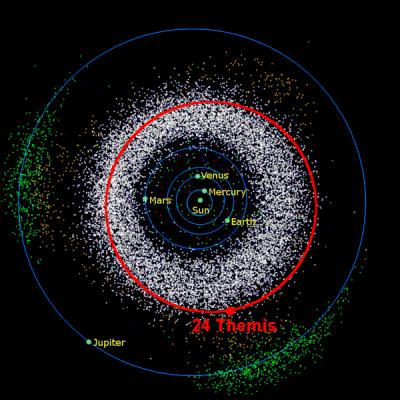
Most asteroids are in a “belt”.
While there are asteroids all over the Solar System, there’s a huge collection of them between the orbits of Mars and Jupiter. Some astronomers think that could have formed into a planet if Jupiter was not nearby. By the way, this “belt” may erroneously create the impression that it is chock full of asteroids and require some fancy Millennium Falcon-style maneuvering, but in reality there are usually hundreds or thousands of miles in between individual asteroids. This shows the Solar System is a big place.
Asteroids are made of different things.
In general, an asteroid’s composition is determined by how close it is to the Sun. Our nearby star’s pressure and heat tends to melt ice that is close by and to blow out elements that are lighter. There are many kinds of asteroids, but these are the three main types, according to NASA:
- Dark C (carbonaceous) asteroids, which make up most asteroids and are in the outer belt. They’re believed to be close to the Sun’s composition, with little hydrogen or helium or other “volatile” elements.
- Bright S (silicaceous) asteroids and are in the inner belt. They tend to be metallic iron with some silicates of iron and magnesium.
- Bright M (metallic) asteroids. They sit in the middle of the asteroid belt and are mostly made up of metallic iron.
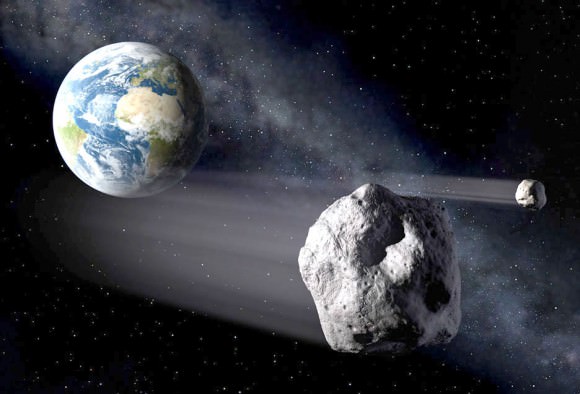
Asteroids also lurk near planets.
NASA also has classifications for this asteroid type. Trojans stay in the same orbit as a planet, but they “hover” in a special spot known as a Lagrangian point that balances the pull of the planet’s gravity and the pull of the Sun. Trojans near Mars, Jupiter and Neptune have been discovered — as well as at least one near Earth in 2011. We also have near-Earth asteroids, which cross our orbit and could (statistically speaking) one day pose a threat to our planet. That said, no one has yet identified any one asteroid that will one day collide with our planet for sure.
Asteroids have moons.
While we think of moons as something that orbits a planet, asteroids also have smaller bodies that orbit them! The first known one was Dactyl, which was discovered in 1993 to be orbiting a larger asteroid called Ida. More than 150 asteroids are known to have moons, with more being discovered periodically. A more recent example is one discovered orbiting Asteroid 2004 BL86, which passed 750,000 miles (1.2 million kilometers) from Earth in early 2015.

We have flown by, orbited and even landed on asteroids. NASA says there are more than 10 spacecraft that accomplished at least one of these, so we’ll just cover a couple of examples here. NEAR Shoemaker touched down and survived for weeks on 433 Eros in 2001 despite not being designed to do it. NASA’s Dawn spacecraft spent months orbiting Vesta — the second-largest member of the asteroid belt — in 2011 and 2012. And in 2010, Japan’s Hayabusa spacecraft made an astonishing return to Earth bearing samples of asteroid Itokawa that it nabbed in 2005.
Asteroids are too small to support life as we know it. That’s because they’re too tiny to even hold on to atmospheres. Their gravity is too weak to pull their shape into a circle, so they’re irregularly shaped. To get a sense of just how small they are in aggregate, NASA says the mass of all the asteroids in the Solar System is less than our Moon — which only has a tenuous “exosphere” itself.
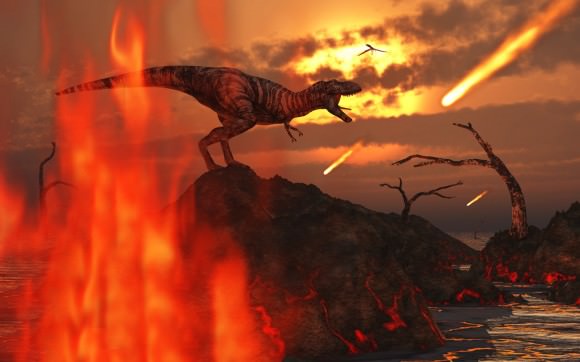
Despite their small size, water may flow on asteroid surfaces. Observations of Vesta released in 2015 show gullies that may have been carved by water. The theory is that when a smaller asteroid slams into a bigger one, the small asteroid releases a layer of ice in the bigger asteroid it hit. The force of the impact briefly turned the ice into water, which streaked across the surface. (As for how the ice got there in the first place, it’s possible that comets deposited it in some way — but that’s still being investigated as well.)
An asteroid could have killed the dinosaurs. The fossil record for dinosaurs and other creatures of their era show them rapidly disappearing around 65 million or 66 million years ago. According to National Geographic, there are two hypotheses for this event: an asteroid or comet hitting the Earth, or a huge volcano eruption. The case for an asteroid comes from a layer of iridium (a rare element on Earth, but not in meteorites) that is found all over the world, and a crater called Chicxulub in Mexico’s Yucatan Peninsula that is about 65 million years old. Iridium, however, is also found inside the Earth, which lends credence to some theories that it was volcanoes instead. In either case, the resulting debris blocked the Sun and eventually starved those survivors of the impact.
At least one asteroid has rings. Called Chariklo, scientists made the surprise discovery in 2013 when they watched it pass in front of a star. The asteroid made the background star “blink” a few times, which led to the discovery that two rings are surrounding the asteroid.
Moon Dust Could ‘Engulf’ Lunar Rovers — Especially During Sunrise and Sunset

That video above is perhaps the ultimate off-roading adventure: taking a rover out for a spin on the moon. Look past the cool factor for a minute, though, and observe the dust falling down around that astronaut.
The crew aboard Apollo 16 (as well as other Apollo missions) had a lot of problems with regolith. It got into everything. It was so abrasive that it wore away some equipment in days. It smelled funny and probably wasn’t all that good to breathe in, either. Many have said that when we return to the moon, dust must be dealt with for long-term survival.
Things could get worse at sunrise and sunset. One new study (not peer-reviewed yet) finds a “serious risk” that rovers “could be engulfed in dust.” That’s because lunar dust appears to have electrostatic properties that, somehow, is triggered by changes in sunlight. (NASA is already doing some serious investigation into this matter using its orbiting missions.)
What the researchers did, in conjunction with ONERA (The French Center of Aerospace Research) was conduct simulations for two types of lunar regions — the terminator (the day/night boundary) and an area experiencing full sunlight.
“Dust particles were introduced into the simulation over a period of time, when both the surface and the rover were in electrical equilibrium,” the Royal Astronomical Society stated.
“In both the test cases, dust particles travel upwards above the height of the rover, but results suggest that they move in different directions. On the day side, the particles are pushed outwards and on the terminator the dust travels upwards and inwards above the rover, regrouping in the vacuum above it. The terminator simulation began with a region void of dust which was later filled by lunar dust particles.”
The bottom line? A lunar rover could accumulate a significant amount of dust on the moon, especially if it’s sitting at or near the terminator. This could be addressed by using dome-shaped rovers that would see the dust fall off, added lead author Farideh Honary, a physicist at the University of Lancaster, in a statement.
The work was presented at the RAS National Astronomy Meeting today (July 3). A paper has been submitted to the Journal for Geophysical Research, so more details should be forthcoming if and when it is published.
Credit: Royal Astronomical Society

